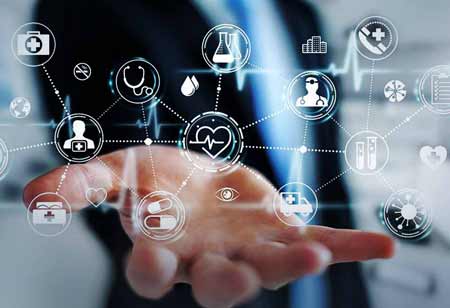THANK YOU FOR SUBSCRIBING
Be first to read the latest tech news, Industry Leader's Insights, and CIO interviews of medium and large enterprises exclusively from Gov CIO Outlook
THANK YOU FOR SUBSCRIBING

By
Government CIO Outlook | Saturday, May 07, 2022
Stay ahead of the industry with exclusive feature stories on the top companies, expert insights and the latest news delivered straight to your inbox. Subscribe today.
Globally, natural disasters significantly impact a large portion of the population. Thousands of people have to evacuate each year due to natural disasters. According to recent figures, 65 million people have become refugees and immigrants because of climate-related disasters. Natural disasters are one of the most significant causes of human suffering, causing deaths, injuries, diseases, and homelessness. Preventing disasters is essential to reduce this extreme level of human suffering.
Natural disaster preparedness strategies fall into four categories based on how they address specific issues. Preparation plans, emergency training, and alert systems are the first steps. Responses include emergency isolation, search and rescue operations, and public alert devices. Finally, mitigation includes disaster-effective activities such as building code and zoning and public education, followed by rescue recovery, which involves transitional shelter, long-term healthcare, and therapy. Natural disaster mitigation strategies can reduce disasters, but the sector has slowly adopted emerging technologies. Recently, this has begun to change.
How does the Internet of Things (IoT) affect disaster management?
An IoT ecosystem consists of devices that connect to the internet. Connected sensors have made a significant contribution in this field by capturing real-time data, transmitting it to software that analyzes it automatically, and interpreting the results using artificial intelligence (AI). Many industries can benefit from leveraging this connectivity.
Researchers have been collecting seismic data from sensors and analyzing it with AI to assess earthquake magnitudes and patterns. For example, researchers from Google and Harvard are using AI to predict the aftershocks of earthquakes based on this data.
Sensors also power flood early warning systems. A platform from Google is already under development that uses data collected from rain gauges along with flood simulation software as a means of predicting floods with a greater level of accuracy than can be achieved by traditional systems. The effects of volcanic eruptions are devastating and difficult to predict. Future work on analyzing ash particle shapes to determine volcano types and better predict eruptions will likely improve these predictions with AI and IoT.
Potential of IoT in disaster prevention
Recent years have seen rapid progress in disaster prevention using IoT, but some limitations still need to be overcome before IoT can be fully utilized. In the case of AI systems, there is a possibility that there could be errors in the data fed into the system, for example.
For IoT to thrive in this field and evolve into life-saving applications, researchers must focus on solving current AI issues to enable IoT to move forward in this field. They need to guarantee that sensors can assemble data of high quality, and they need to hire professionals who can develop effective strategies for adoption. Bringing in experienced researchers with artificial intelligence expertise will help them achieve this.
I agree We use cookies on this website to enhance your user experience. By clicking any link on this page you are giving your consent for us to set cookies. More info

However, if you would like to share the information in this article, you may use the link below:
www.govciooutlookapac.com/news/key-benefits-of-implementing-iot-in-disaster-management-nid-1750.html



